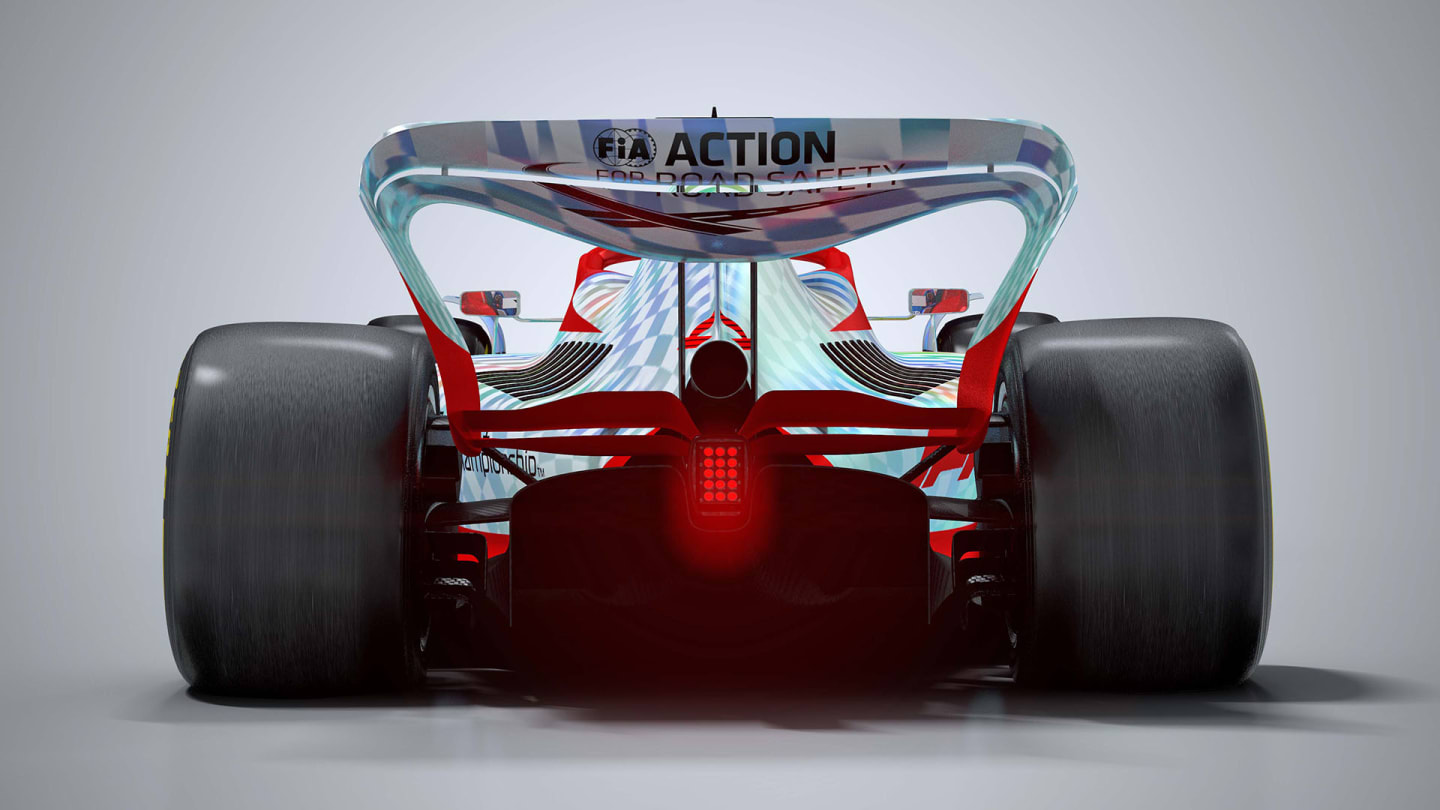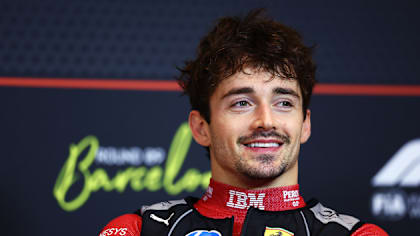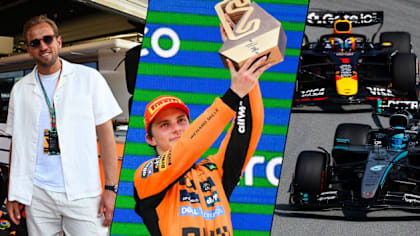
Technical
TECH TUESDAY: How the rear wing of the 2022 car has been designed to be an F1 gamechanger

Share

In terms of the overriding objective of the new aero regulations, the new front wing and new underfloor described in the previous two Tech Tuesdays prepare the airflow in a way in which the new rear wing can complete the process – of throwing the car’s turbulent wake high into the air and away from the front wing of the following car. It also functions as a conventional rear wing in creating downforce.
Though not quite as much downforce as previous rear wings created. It carries two elements, as before, though with more stringent controls on the shape of the elements and the amount by which they are permitted to overlap.
TECH TUESDAY: Why new floors should help enhance F1's wheel-to-wheel action in 2022
The new, highly distinctive shape is created by the elements, endplates and beam wing forming one continuous line with no sharp corners. It’s about more than looking sleek; because the endplates can no longer fence off the wing elements and must be flush, they can no longer prevent leakage of the airflow across the surfaces of those elements and off the edge.
This makes the elements – which rely on the pressure difference between the underside and upper surface to work – less effective in creating downforce but, more importantly, greatly reduces the vortices of spinning air spilling off the wing corners where two separate airflows mix. Reducing these vortices makes the wake much less turbulent and unfavourable for the car behind.
Furthermore, the corners of the endplate must be radiused by a specified amount to avoid those vortex-inducing sharp corners. Those endplates may no longer have slats in them to equalise the pressures between their inner and outer faces. This too reduces their effectiveness in creating downforce from the car, but greatly cleans up its aerodynamic wake.
Loss of downforce compared between 2021 and new 2022 car
The endplates then sweep quite dramatically inboard. As the air travelling over the body from the front reaches this part of the car, the inward sweep of the endplates pulls it inboard of the rear wheel, narrowing the whole aerodynamic wake of the car and preventing it from spilling outwards to the detriment of the car behind.
The air is effectively funnelled into the area which meets the underfloor venturi exits. The air exiting the upward angle of the venturi exit ramp (an angle continued by the underside of the beam wing) is scavenged by the pressures created by this air which has been funnelled by the endplates. The whole convergence is then thrown high by that upwards venturi/beam wing sweep.
TECH TUESDAY: How the front wing on the all-new 2022 cars has been designed to improve overtaking
That beam wing – which makes a return to the regulations, having been banned since 2014 – creates a low-pressure area behind the exit ramps of the underfloor venturis, accelerating the exit air, and therefore the speed of the whole underbody airflow. This enhances the downforce created by the underfloor, compensating for the reduction in downforce from the new wings.

Beam wings, circled in red here, are back for 2022 (shown on the 2022 showcar featuring Williams' 2021 livery)
As with the wing element-to-endplate transition, so with the endplate-to-beam-wing, there can be no overlapping of surfaces. They must form a continuous line – for the same reason: that of limiting the creation of vortices, which hurt the aerodynamics of the following car.
WATCH: Everything you need to know about the new 2022 F1 car
The total downforce created by the cars is expected to be only slightly lower than those of last year, but the proportion generated by the underbody is much greater, and that of the wings and over-body correspondingly less.
As a driver catches the car ahead, that shapely rear wing he sees big in his vision will no longer be associated with a sudden loss of front downforce from his own car. In this way, the hope and expectation is that we’ll see battling cars entering the straights much closer than we’ve become used to over the years.
Everything you need for the 2022 Formula 1 season
- DIARY DATES: The 2022 F1 calendar and F1 car launch schedule
- WATCH: Everything you need to know about the new 2022 F1 car
- 2022 F1 GRID – All the drivers and teams racing this season
- 10 things every Formula 1 fan should be excited for in 2022
- 5 bold predictions for the 2022 season – but how many will come true?
YOU MIGHT ALSO LIKE
News Leclerc ‘very happy’ with unexpected podium finish in Spain as he outlines clash with Verstappen

Video WATCH: Verstappen collides with Russell in astounding moment during Spanish GP
Feature What the teams said – Race day in Spain
Feature SPAIN LOWDOWN: All the key moments as Piastri stars, restart chaos ensues and footballers descend on the paddock



